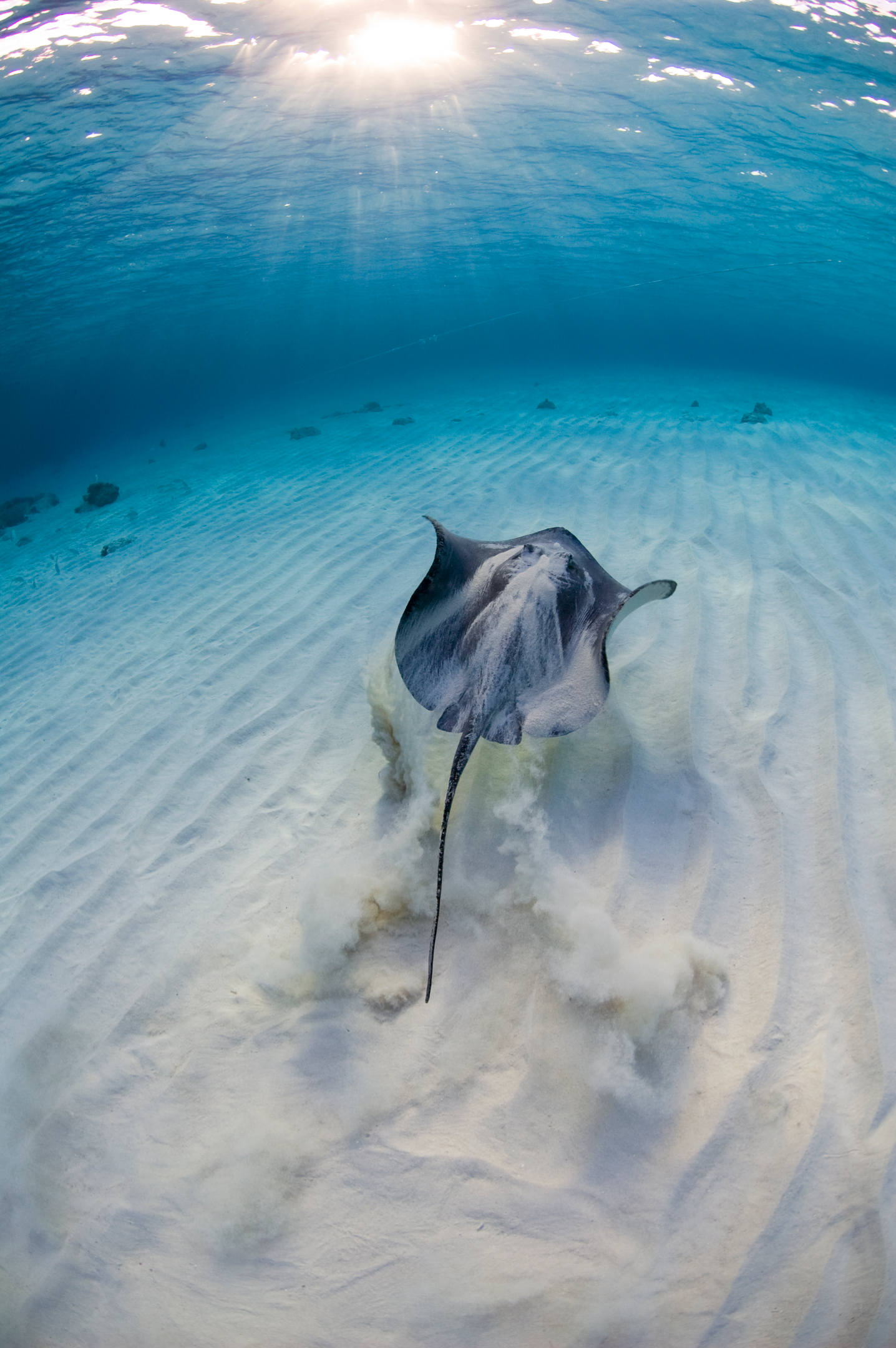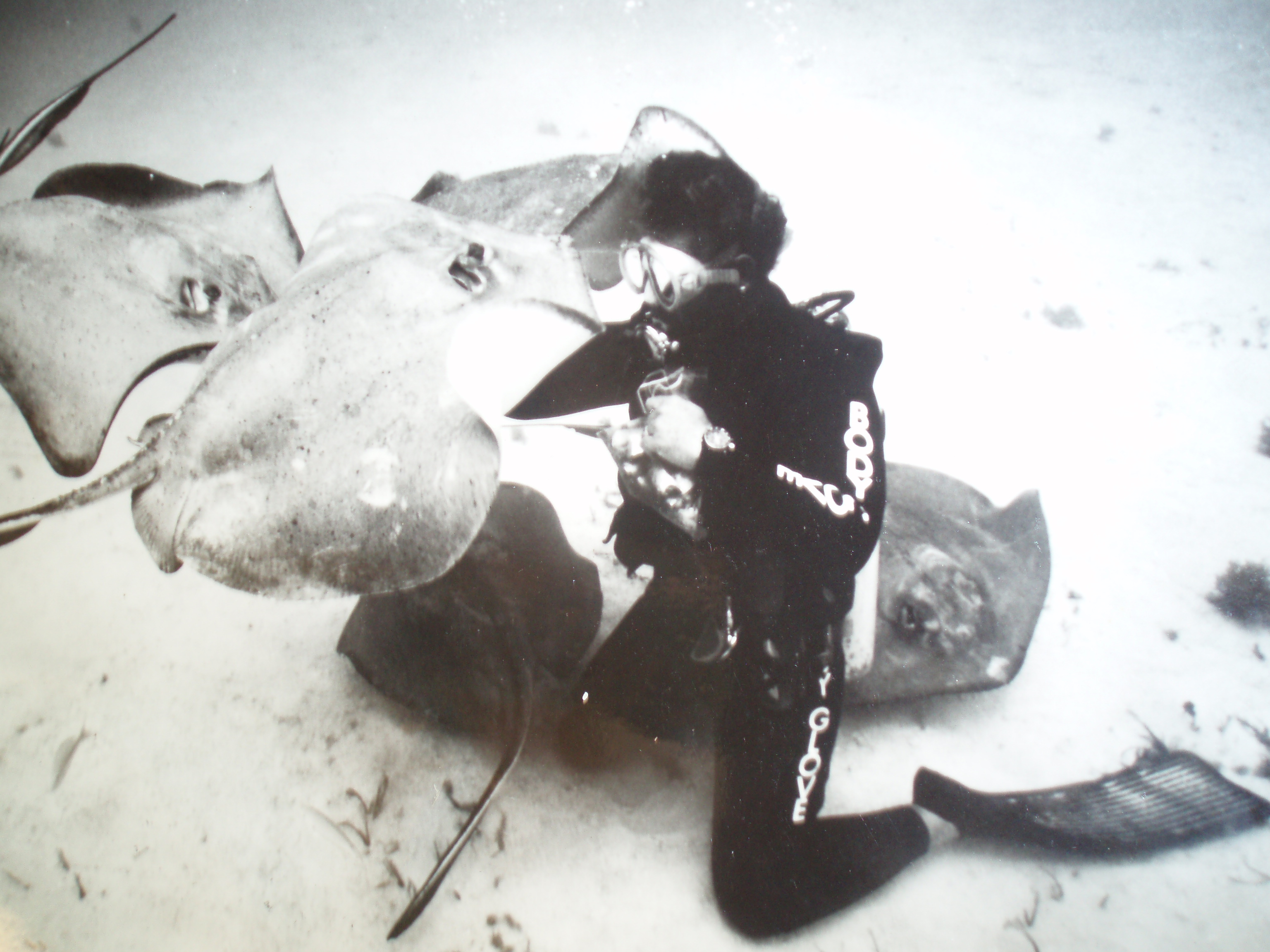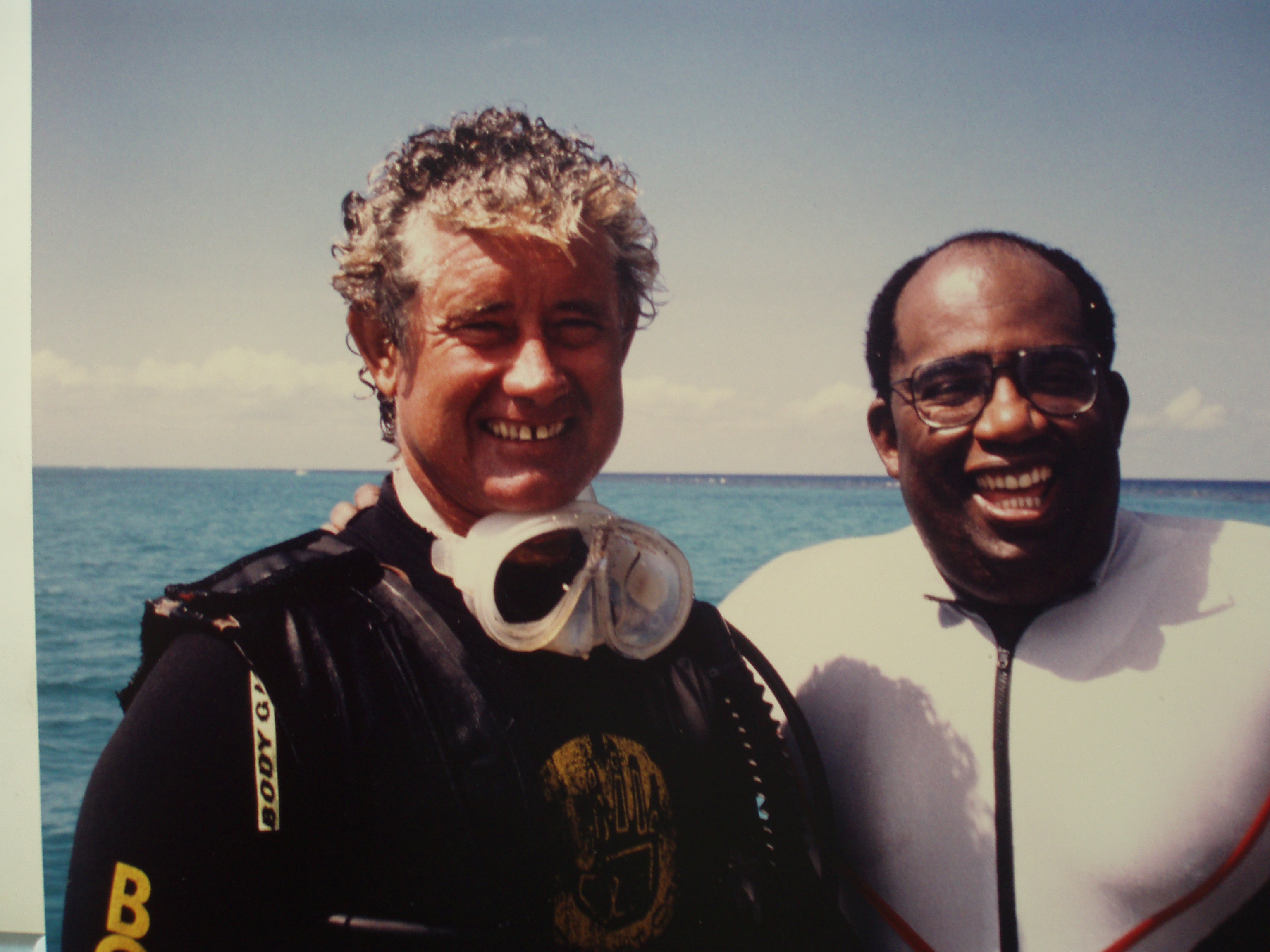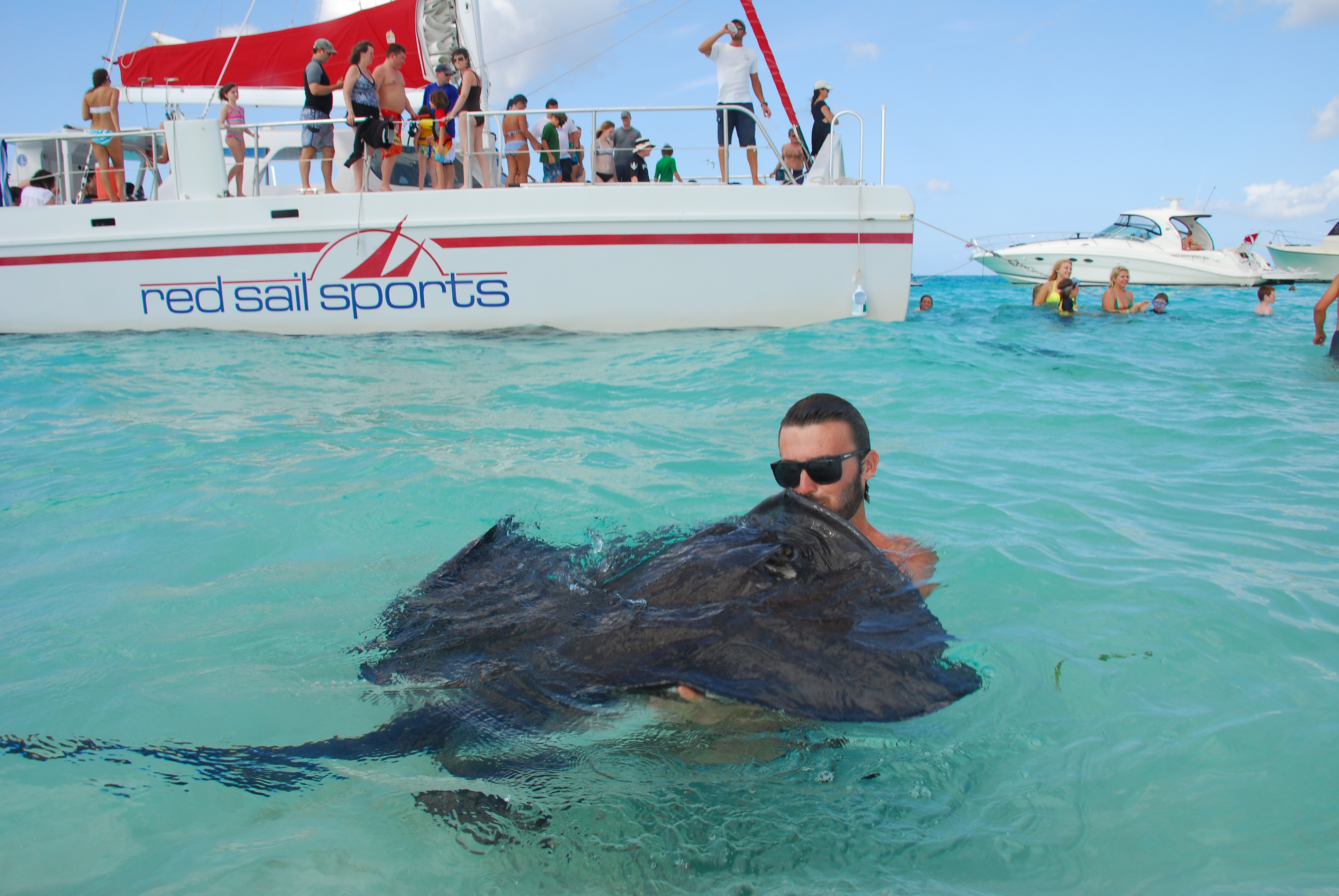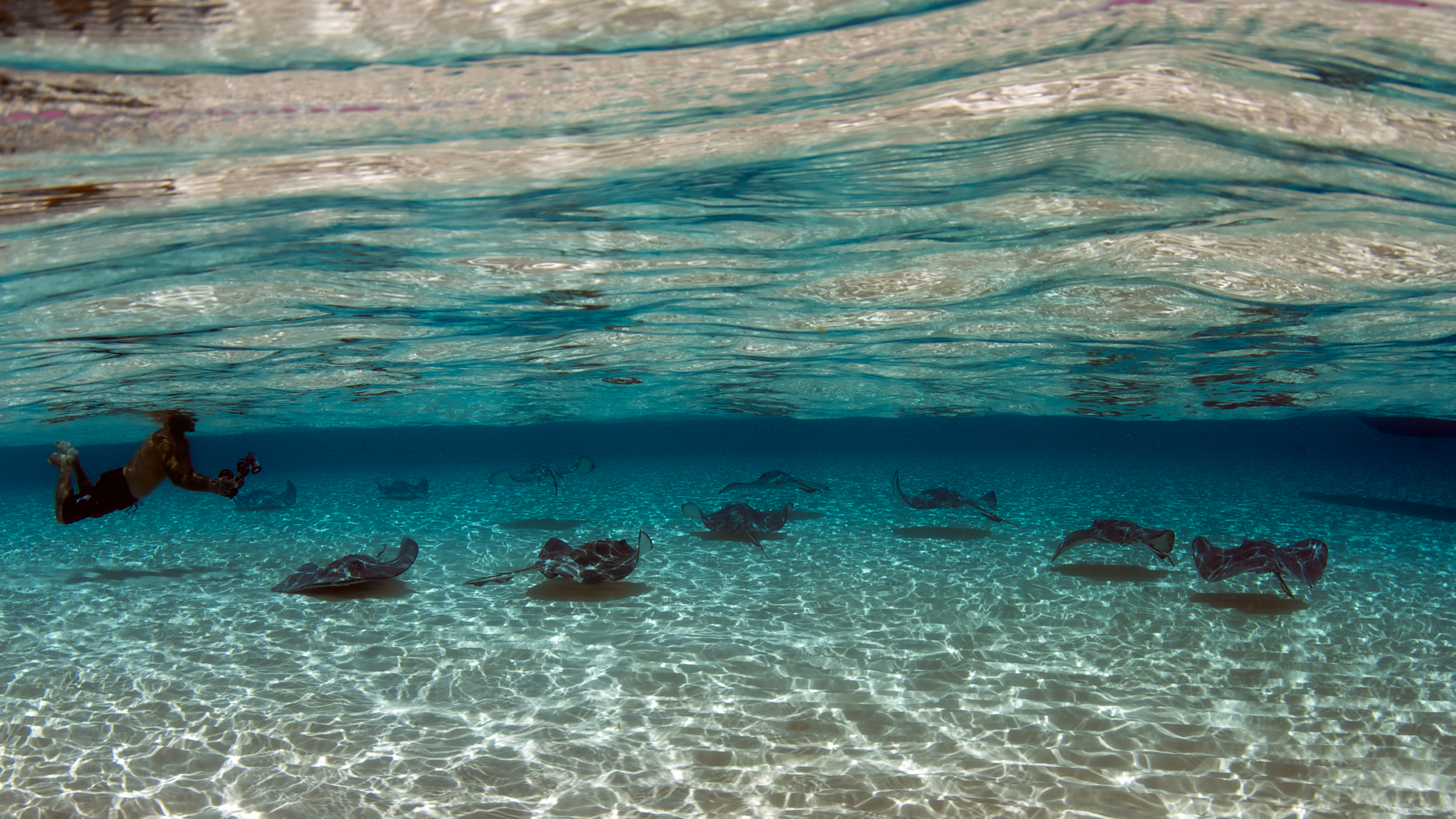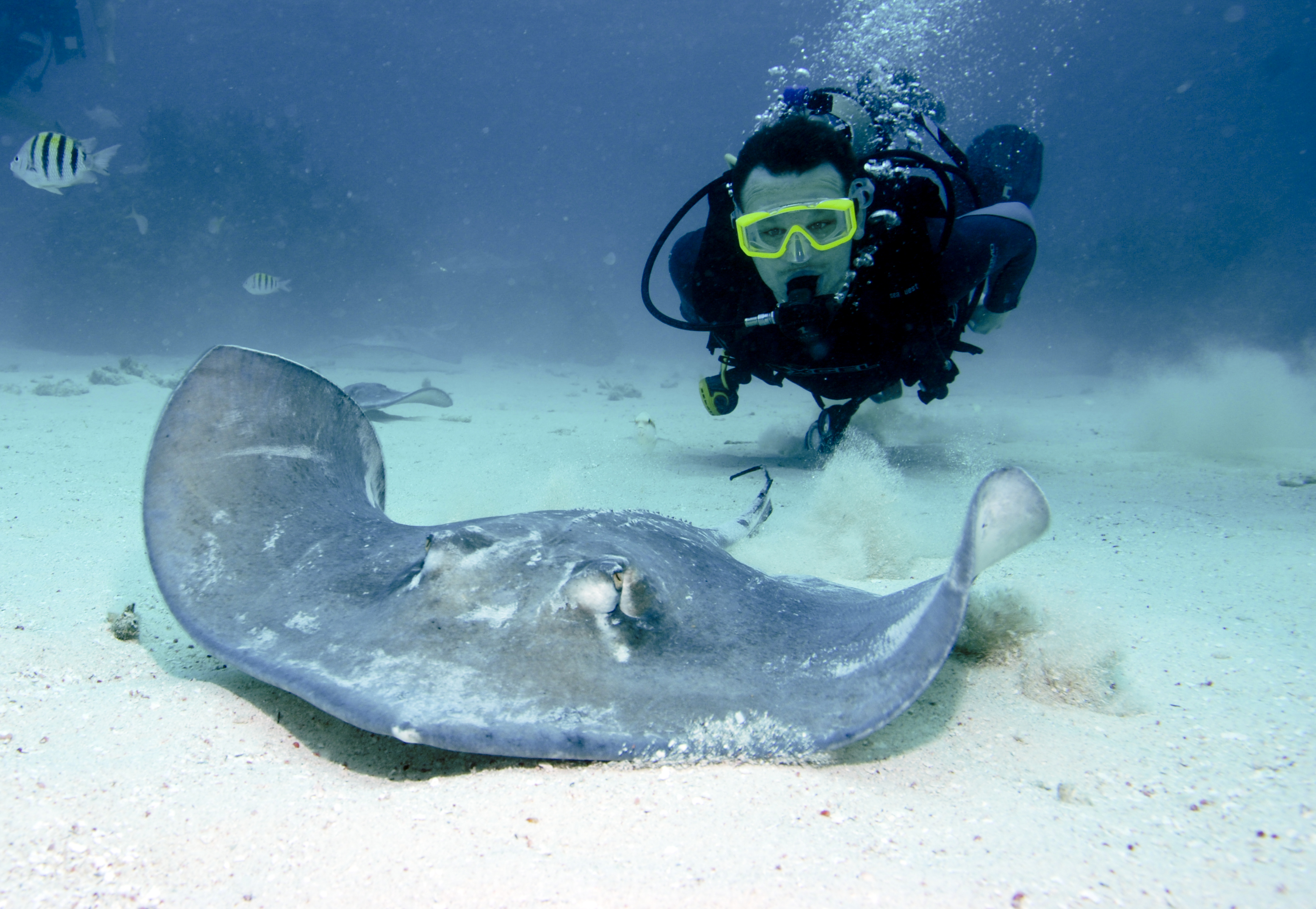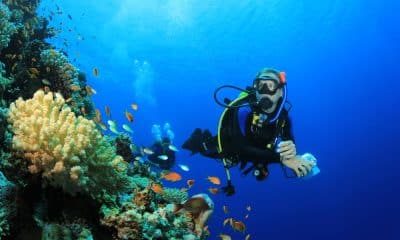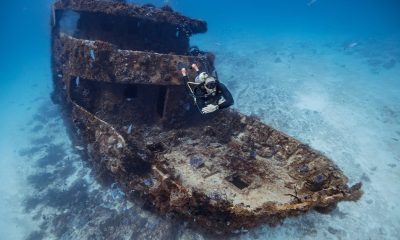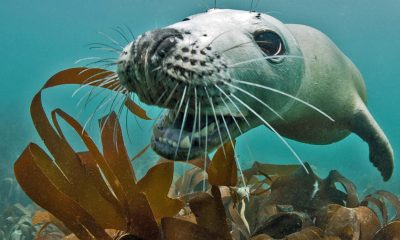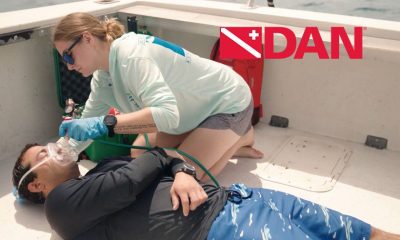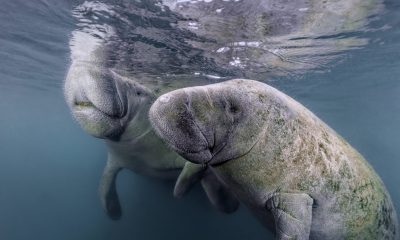Marine Life & Conservation
Stingray City, Cayman’s No.1 Tourism Attraction, Enjoys Full Protection
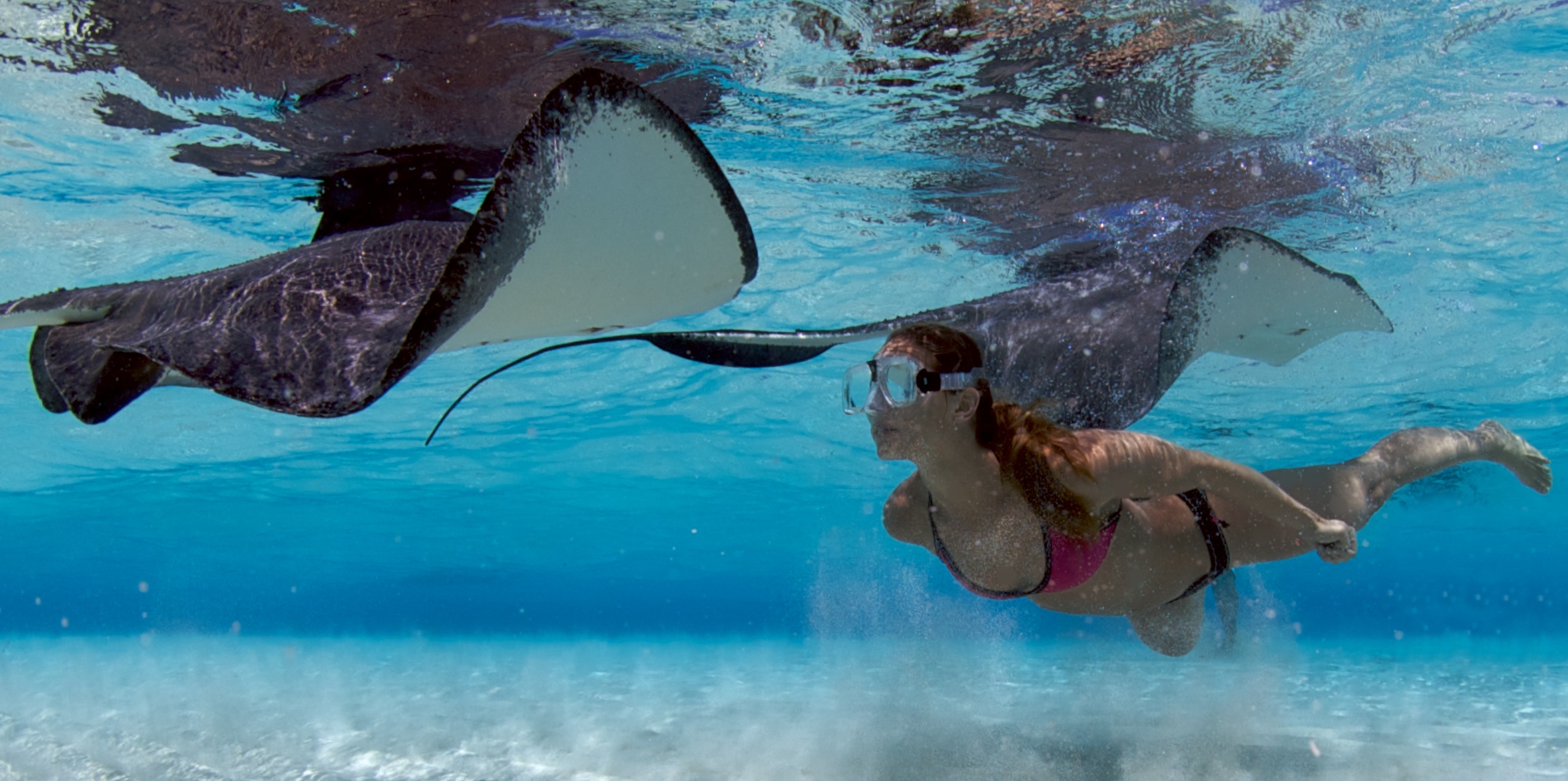
For more than 30 years, those who have dived and snorkelled in Grand Cayman have enjoyed a unique first-hand encounter with dozens of friendly stingrays that gather at two sites in the clear waters of the North Sound − Stingray City and the sandbar. This creature experience is on the bucket lists of divers across the world. The celebrity rays have been featured on the front page of the Wall Street Journal, the cover of National Geographic Magazine, and most dive publications. NBC’s Al Roker dived with the rays in 1989 and put them on network TV. The exposure has made Stingray City one of the most popular dive and snorkel sites in the world, and it contributes significantly to the local tourism economy.
Cayman’s celebrity stingrays are now under the full legal protection of the Cayman Islands Government, which amended its New Conservation Law to extend protection to Southern Stingrays in Cayman Waters. Before the amendment, the law only protected them in the Sandbar or Stingray City, designated as Wildlife Interaction Zones, and in marine parks or designated environmental zones. The amendment to the Conservation Law also extends protection to Eagle Rays and Manta Rays in local waters.
Members of the Cayman Islands Tourism Association have always supported efforts to protect the Southern Stingray and the move by the government is welcomed. Everyone understands how vital Stingray City is to Cayman’s tourism product.
Steve Broadbelt, co-founder of Ocean Frontiers: “Many have tried to copy Stingray City, others have even tried to poach and export our Southern Stingrays, but nothing comes close to the wild aggregations of Stingrays we have in the Cayman Islands. Stingrays are critical to tourism in Cayman as it gives us a competitive edge over other destinations in the region – everybody loves Stingrays.”
The beginnings of Stingray City can be traced to the island’s early days when local fishermen cleaned their catch in the shallows of the North Sound, attracting the stingrays, which are bottom feeders. Then divemasters doing surface intervals between dives on the North Wall noticed the circling rays and began feeding them.
“I can remember they would come to me and snuggle like puppy dogs, they were wonderful!” recalls Kenney, one of those divemasters and a long-time Red Sail Sports staffer. The divemasters helped dispel the bad myths surrounding stingrays and the Stingray City experience took off. This experience with the friendly rays has thrilled thousands and made Stingray City the number one dive and snorkel site in the Cayman Islands.
“It’s a natural aquarium, not man-made. No Stingrays are caught and kept in captivity so it’s authentic and the rays come and go as they please,” says Nancy Easterbrook, owner of Divetech. “In addition to playing with the gentle Southern Stingrays, green moray eels will visit you, school of blue tangs and snappers and small coral heads reveal their inhabitants if you stop and look closely. In 12 feet of crystal clear water, it’s the ideal photographers dream – no wonder millions have visited the site over the years and has a special place in their dive logs.”
The Cayman Islands Department of Environment introduced guidelines in 2007 to manage traffic at the stingray sites and actual handling of the rays. Dive operators emphasize these rules to visitors before they enter the water.
“Our briefings cover the highlights of the marine conservation laws as applicable to the Wildlife Interaction Zones, including why the regulations make sense, so people understand how to safely enjoy the ‘aquarium’ for both their protection and the Stingrays protection,” says Steve Broadbelt. “In general we tell guests to watch and observe the rays, and not molest or annoy them.”
Red Sail Sports dive boats also include an introduction to “Fluffy” the stuffed stingray during dive briefings. “The stuffed stingray is used to demonstrate the anatomy of the stingrays – where the mouth is, the gills, how they breathe, how they feed, and of course the tail including the barb,” says Dive Operations Manager Clive Webb. “This lets the guests know where they can touch the Stingrays, what they feel like both on top and underneath, and what to pay attention to and be careful of. We also include the contribution by our own Pat Kenney being one of the first to get in with the rays.”
An annual census by conservationist Guy Harvey, with assistance and oversight by the Department of Environment, helps monitor the health of the rays and the dynamics at both sites. According to the latest count 90 stingrays frequent both Stingray City and the Sandbar. Most are female and many of them are pregnant. This year 48 new stingrays have been tagged in the census.
Jessica Harvey, Research Officer, Cayman Islands Department of Environment: “With each ray having a PIT tag, a microchip under the skin, we can determine exactly who we see on a given day, and just as importantly, who we haven’t seen. One female in particular we hadn’t seen since before 2012!”
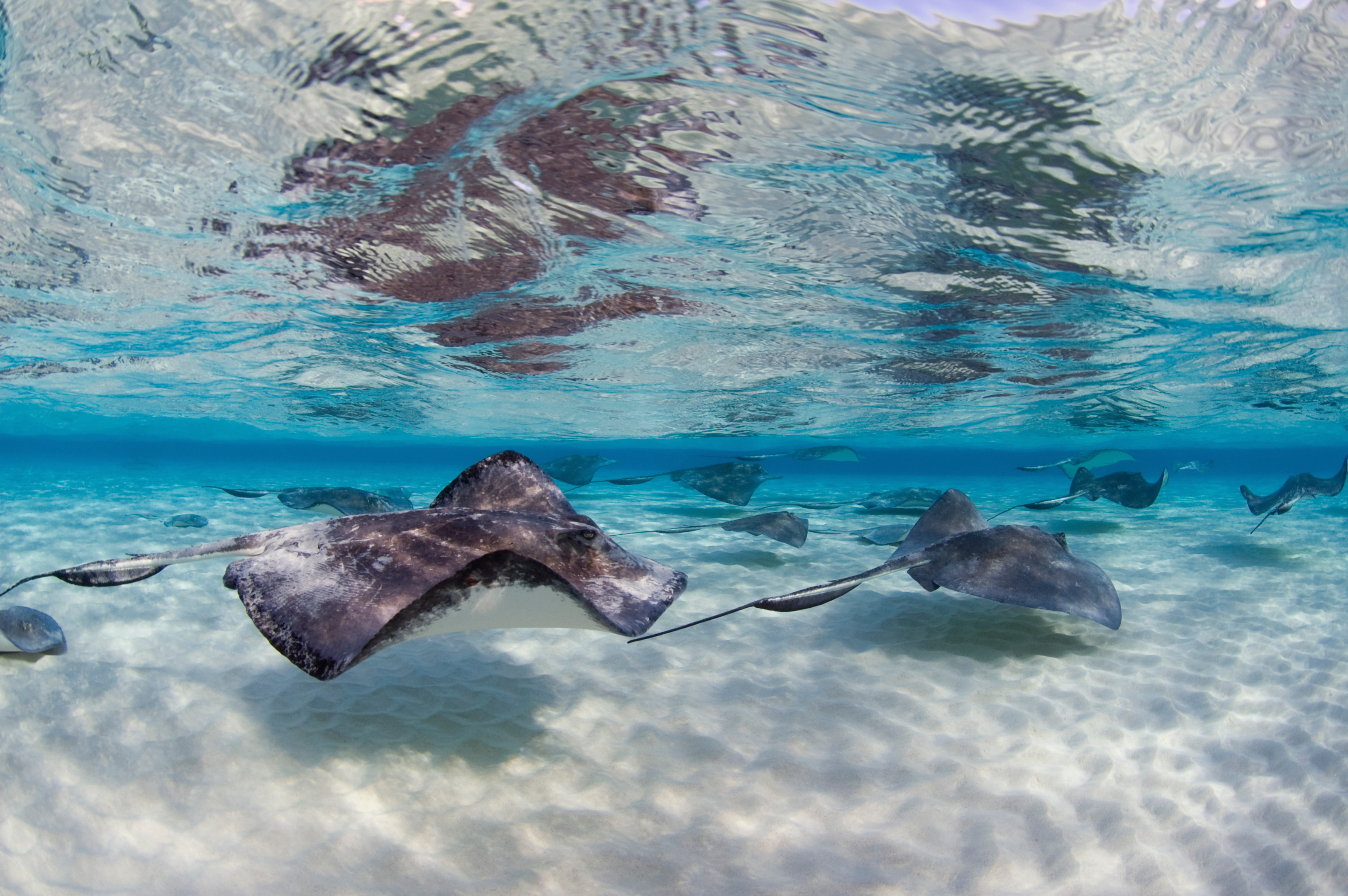 “Even with the best wall dives, vibrant coral reefs and massive shipwrecks in the Cayman Islands, when a diver sees an image of a Stingray playing with a diver or snorkeler, that photo needs no caption of where it was taken,” says Steve Broadbelt. “Even today, whether it’s your first time or 100th time, the rays never lose their magic and shine a memory that only those who know can fully understand.”
“Even with the best wall dives, vibrant coral reefs and massive shipwrecks in the Cayman Islands, when a diver sees an image of a Stingray playing with a diver or snorkeler, that photo needs no caption of where it was taken,” says Steve Broadbelt. “Even today, whether it’s your first time or 100th time, the rays never lose their magic and shine a memory that only those who know can fully understand.”
Blogs
Heading out on the water this Summer? Watch for manatees
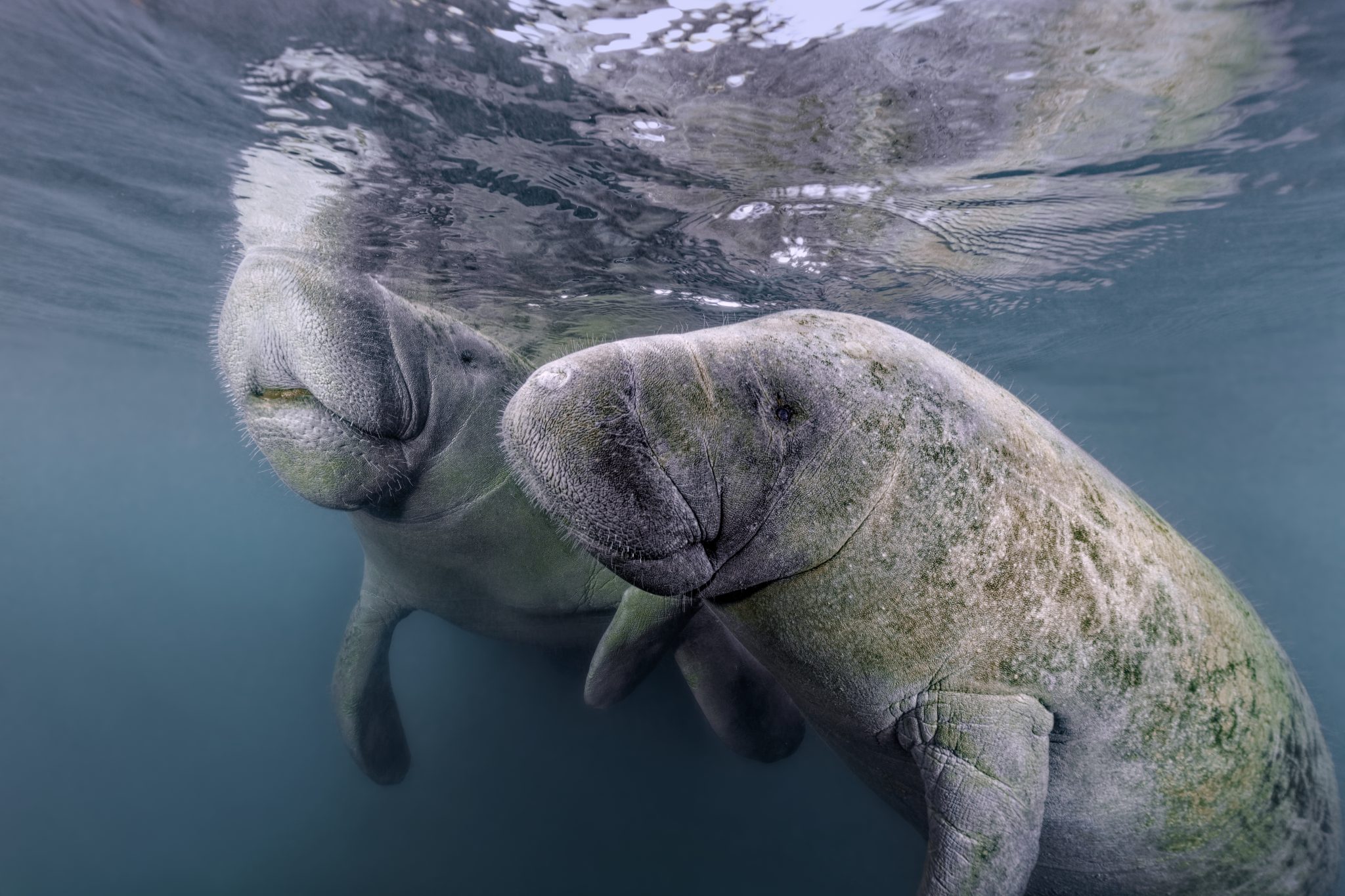
As National Safe Boating Week approaches, Save the Manatee® Club is urging boaters, and anyone that enjoys Florida’s waterways, to respect and protect the defenseless manatees that inhabit our shared waterways. From May 18 to 24, leading up to Memorial Day Weekend, the campaign aims to raise awareness about recreational boating safety and the importance of safeguarding imperiled manatees during the summer boating season. This week also emphasizes the importance of encouraging boaters to enroll in a boating safety course.
Manatees are semi-migratory marine mammals that are commonly found in shallow estuaries, bays, rivers, canals, and coastal areas throughout Florida and neighboring states. With some manatees venturing as far west as Texas and as far north as Massachusetts, collisions between these gentle giants and watercraft have become distressingly frequent. Boat propellers and high-speed collisions pose significant threats to manatees, often resulting in severe injuries or even death.
Save the Manatee Club is calling on all water enthusiasts to follow essential manatee safety tips to ensure the well-being of the imperiled manatee:
- Obey Speed Zone Signs: Familiarize yourself with and adhere to posted speed limits to prevent collisions with manatees.
- Reduce Glare with Polarized Sunglasses: Wear polarized sunglasses to enhance visibility and spot manatees below the water’s surface.
- Recognize Manatee Signs: Learn to identify signs of manatees in the area, such as swirls or flat spots on the water caused by their movements.
- Respect Manatee Sanctuaries: Keep a safe distance from posted manatee sanctuaries and avoid pursuing or harassing these marine mammals, as it is illegal and can disrupt their natural behaviors.
- Report Distressed Manatees: In Florida, promptly report distressed, injured, tagged, or orphaned manatees to the Florida Fish and Wildlife Conservation Commission (FWC) at 1-888-404-FWCC (3922). Outside of Florida, report sightings to the appropriate state agency or rescue organization. A list of agencies to contact is available at savethemanatee.org/report.
- Protect Seagrass Beds: Avoid boating over seagrass beds and shallow areas where manatees may be feeding. Stick to deep water channels while remaining vigilant, as manatees also utilize these channels during their travels.
- Dispose of Fishing Line Responsibly: Anglers should properly dispose of or recycle used fishing line to prevent entanglement hazards for manatees.
“Each year, National Safe Boating Week provides an excellent reminder for all of us to be aware that we share our waterways with vulnerable manatees,” emphasized Patrick Rose, Aquatic Biologist and Executive Director of Save the Manatee Club. “With the recent Unusual Mortality Event on Florida’s East Coast claiming an alarming number of manatees’ lives, it is more crucial than ever to prevent preventable deaths caused by watercraft collisions. By following manatee-safe boating guidelines, such as obeying speed zones and remaining vigilant for manatees, everyone on the water can contribute to the protection of these gentle giants.”
Save the Manatee Club offers a range of free materials to help safeguard manatees and raise awareness about manatee-safe boating practices. Shoreline property owners and park or marina managers can order aluminum dock signs to alert others about the presence of manatees in their areas. Boaters and paddlers can request packets containing a safety tips card, a waterproof boat banner, and a decal to display on their vessels, providing the number to report manatees in distress. To view and request these materials, visit savethemanatee.org/resources. Save the Manatee Club will also be hosting a live webinar for National Safe Boating Week on Tuesday, May 21st at 6pm EST. To register, visit savethemanatee.org/register.
Blogs
The Ocean Cleanup Breaks 10,000,000 KG Barrier

The Ocean Cleanup, the global non-profit project, has removed a verified all-time total of ten million kilograms (22 million lbs.) of trash from oceans and rivers around the world – approximately the same weight as the Eiffel Tower.
To complete its mission of ridding the oceans of plastic, The Ocean Cleanup uses a dual strategy: cleaning up the Great Pacific Garbage Patch (GPGP) to remove the plastic already afloat in the oceans, while stopping the flow of plastic from the world’s most polluting rivers.
Through cleaning operations in the GPGP and in rivers in eight countries, the cumulative total of trash removed has now surpassed ten million kilograms. This milestone demonstrates the acceleration of The Ocean Cleanup’s impact, while underlining the astonishing scale of the plastic pollution problem and the need for continued support and action.
While encouraging for the mission, this milestone is only a staging point: millions more tons of plastic still pollute our oceans and The Ocean Cleanup intends to continue learning, improving and innovating to solve this global catastrophe.
This announcement comes as governments from around the world meet to continue negotiations to develop a new legally binding instrument to end plastic pollution at INC4 in Ottawa, Canada. Representatives of The Ocean Cleanup will be in attendance and the organization will be urging decision-makers to collaborate towards a comprehensive and ambitious global treaty which addresses plastic at all stages of its life cycle and in all marine environments worldwide, including in areas beyond national jurisdiction.
It is encouraging to see that the need for remediation is reflected in the various options for potential treaty provisions. It is essential that the final treaty contains clear targets for the remediation of legacy plastic pollution, and reduction of riverine plastic emissions.
Tackling plastic pollution requires innovative and impactful solutions. The treaty should therefore incentivize the innovation ecosystem by fostering innovations that make maximal use of data, technology and scientific knowledge – such as those designed and deployed by The Ocean Cleanup.
‘After many tough years of trial and error, it’s amazing to see our work is starting to pay off – and I am proud of the team who has brought us to this point.’ said Boyan Slat, Founder and CEO of The Ocean Cleanup. ‘While we still have a long way to go, our recent successes fill us with renewed confidence that the oceans can be cleaned.’
The Ocean Cleanup was founded in 2013 and captured its first plastic in 2019, with the first confirmed catch in the GPGP coming soon after the deployment of Interceptor 001 in Jakarta, Indonesia. After surpassing one million kilograms of trash removed in early 2022, the non-profit project has since progressed to the third iteration of its GPGP cleaning solution, known as System 03, and a network of Interceptors currently covering rivers in eight countries, with more deployments set for 2024.
About The Ocean Cleanup
The Ocean Cleanup is an international non-profit organization that develops and scales technologies to rid the world’s oceans of plastic. They aim to achieve this goal through a dual strategy: stemming the inflow via rivers and cleaning up the legacy plastic that has already accumulated in the ocean. For the latter, The Ocean Cleanup develops large-scale systems to efficiently concentrate the plastic for periodic removal. This plastic is tracked and traced through DNV’s chain of custody model to certify claims of origin when recycling it into new products. To curb the tide via rivers, The Ocean Cleanup has developed Interceptor™ solutions to halt and extract riverine plastic before it reaches the ocean. Founded in 2013 by Boyan Slat, The Ocean Cleanup now employs a broadly multi-disciplined team of approximately 140. The foundation is headquartered in Rotterdam, the Netherlands.
For more information, visit: theoceancleanup.com and follow @theoceancleanup on social media.
-

 Gear Reviews1 month ago
Gear Reviews1 month agoGEAR REVIEW – Revolutionising Diving Comfort: The Sharkskin T2 Chillproof Suit
-

 Blogs2 months ago
Blogs2 months agoMurex Resorts: Passport to Paradise!
-

 Blogs3 weeks ago
Blogs3 weeks agoDive Indonesia Part 3: Dive into Lembeh Trip Report
-

 Blogs3 months ago
Blogs3 months agoDiver Discovering Whale Skeletons Beneath Ice Judged World’s Best Underwater Photograph
-

 News3 months ago
News3 months agoPADI Teams Up with Wellness Brand Neuro to Drive Ocean Change and Create a Blue State of Mind
-

 Marine Life & Conservation3 months ago
Marine Life & Conservation3 months agoSave the Manatee Club launches brand new webcams at Silver Springs State Park, Florida
-

 Blogs2 months ago
Blogs2 months agoSeagrass Awareness Month brings critical food source for Manatees to centre stage
-
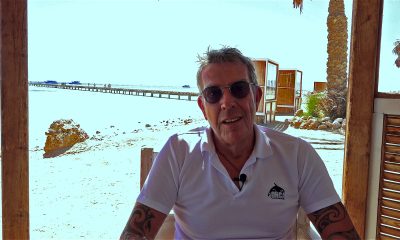
 Blogs2 months ago
Blogs2 months agoSOMABAY: Scubaverse interviews Wolfgang Clausen, General Manager, ORCA Dive Clubs


